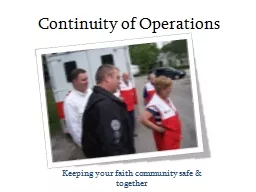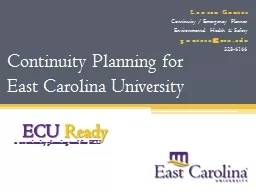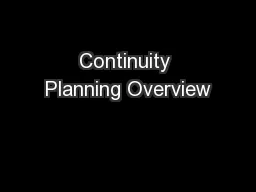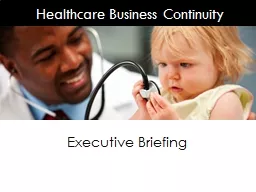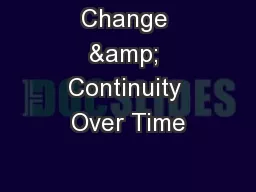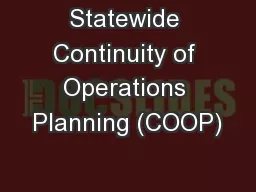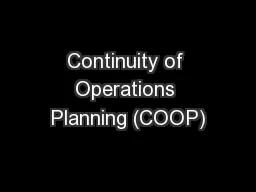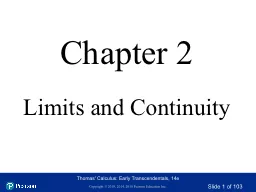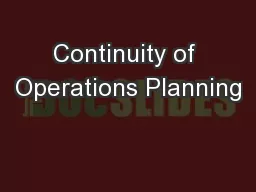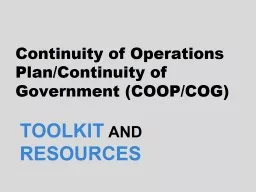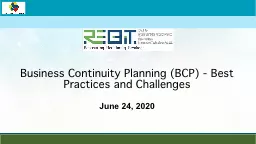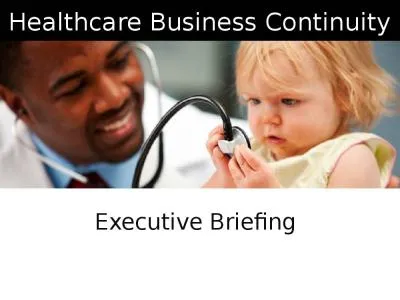PPT-Continuity of Operations
Author : myesha-ticknor | Published Date : 2018-09-21
Keeping your faith community safe amp together FBOs and Emergency Services Anticipating and meeting unmet needs together A natural fit based upon shared core
Presentation Embed Code
Download Presentation
Download Presentation The PPT/PDF document "Continuity of Operations" is the property of its rightful owner. Permission is granted to download and print the materials on this website for personal, non-commercial use only, and to display it on your personal computer provided you do not modify the materials and that you retain all copyright notices contained in the materials. By downloading content from our website, you accept the terms of this agreement.
Continuity of Operations: Transcript
Download Rules Of Document
"Continuity of Operations"The content belongs to its owner. You may download and print it for personal use, without modification, and keep all copyright notices. By downloading, you agree to these terms.
Related Documents

